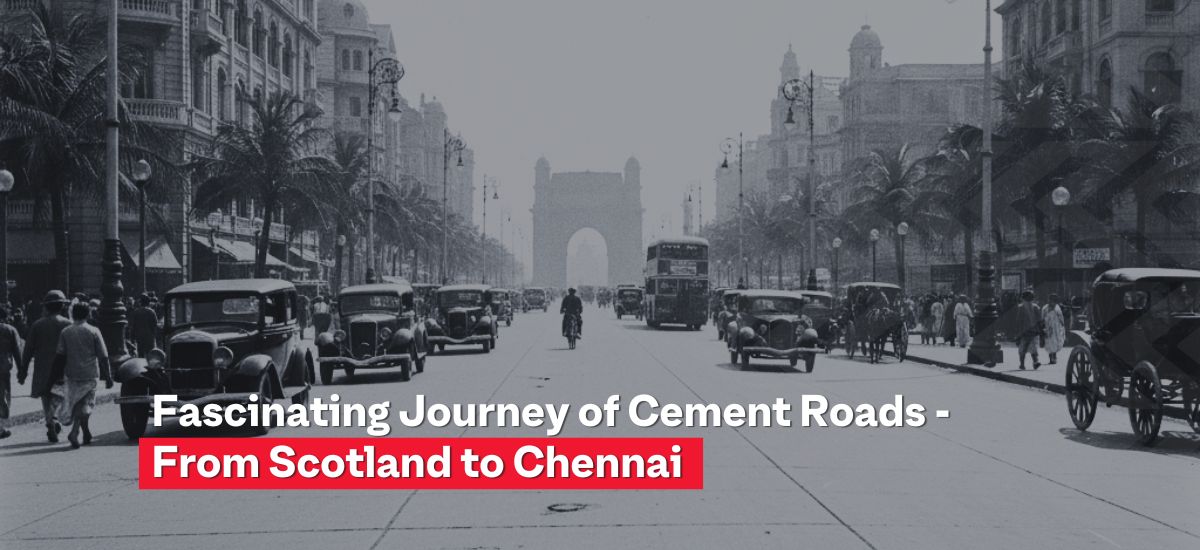The story of cement roads began in Scotland in the 1800s and reached India in 1914 with Chennai’s first concrete street. From historic milestones to modern highways, discover how usage of cement roads evolved in India.
Did you know cement was used in road construction over 150 years ago?
The first documented use of modern Portland cement in road construction dates back to the mid-19th century. In 1865, the world’s first recorded concrete pavement was laid in Inverness, Scotland, paving the way for a new era of durable roadways. Soon after, Bellefontaine, Ohio (USA) built the first concrete street, a part of which still stands as testimony to its lasting strength.
India joined this global movement in 1914, when the British constructed the country’s first concrete road in Chennai. The success of that project inspired a series of concrete roadways in the 1920s and 1930s, including notable stretches such as Delhi-Agra, Mumbai-Pune, and Mysore–Bangalore.
By the 1940s, World War II imposed strict controls on cement distribution, slowing adoption of cement. But from the 1990s onwards, India’s renewed focus on long-term infrastructure development reignited the use of concrete in road construction.
Today, cement roads symbolize more than just connectivity – they represent strength, sustainability, and progress.

